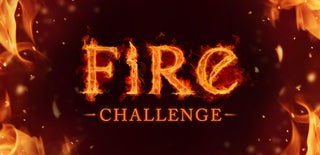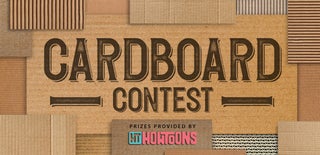Introduction: Pyre Log
Now, fire logs have been around for a while, but they all have a flaw.
Igniting them.
Whether you're hanging around a camp or fireplace, sometimes a lighter is nowhere to be found.
So how about a fire log with its own built-in ignition source?
Step 1: Supplies and Materials
I tried to strictly use flammable and (*mostly) non-toxic materials
Don't forget the dangers of fire! Keep a fire extinguisher handy!
- Cardboard
- Matches
- thin stripes of paper
- Small sticks and tinder
I might use a little dab of glue here and there to hold it together, but nothing excessive
*pretty much everything a fire gives off naturally is toxic to us, humans.
A complete ver1.0 template is at the end
Step 2: The Housing
A completely round, log shape, would be a bit too much, both in design and manufacturing.
An equilateral triangle is simple to draw up and fabricate
I wanted it to have end caps to prevent the flammable filler from falling out
The symmetrical designs in the sides were to give it proper air-flow, while maintaining structural integrity
Plus they look cool. Hey, who said it couldn't look good and be useful?
This may seem like a complicated and time-consuming template, but I avoided gluing a lot, to keep free of fumes.
If I had glued more, I could industrialize this much more efficiently
Step 3: (Prototype) Pull-tab Ignition
I toyed with other designs, and while this is not the most simple layout, it's very reliable.
As displayed above, the inner pull-tab rides on a track system
This prevents the matches from being pulled completely out of the log, and to place them in the ideal location
I trimmed this design a bit, since I am constantly trying to improve upon the old.
Step 4: Pull-tab Ignition
It's the literal core of this project, the pull-tab ignition system.
The center tab holds the matches, while the outer shell provides the pressure and friction needed to ignite
It really is comprised of two parts:
Center tab
- Matches
- Auto-stop (in the form of two "fins" folded outwards
- Cut into the cardboard edge, deep enough for half the matchbook to fit snugly
- Wedge the matchbook into this crevice and staple it securely on both sides
- Test it by inserting the "fins" on the outer shell track
- Outline where the matches lay on the outer shell so the striking pad can get glued there
Outer Shell
- Clam-like, folded over
- friction pads or striking surface
- Long cut-out tracks for fire to meet air and fuel
- Glue the striking pads at a slight tilt on the inside. This is so that more area is available for the matches to rub against
- Make sure that book striking pads are criss-cross, as to have maximum striking area
Step 5: Filler
Here's the fuel part of our fire pyramid, the fluff and kindling.
I used small dry sticks and finely sliced paper bag as "primer" material
A good way to tell if a stick is dry and dead, give it a snap! A dead & dry twig will snap with a sharp crack.
Wet (or green) sticks usually bend or flex without separating into two pieces.
Make sure to leave plenty of air so the fire can breath and oxygen can get through
Step 6: Pull Tab to Ignite
After all is done, time to set up the firepit.. oh wait, you've got most of that done!
just throw a couple of logs in there, and you are good to go!
I will be improving upon this design further, hence it's only ver1.0
Let me know what you think, or if you have any questions, below.
Please vote if you liked it or found it interesting. Thanks!
Attachments

Runner Up in the
Fire Challenge 2017

Runner Up in the
Cardboard Contest 2017












